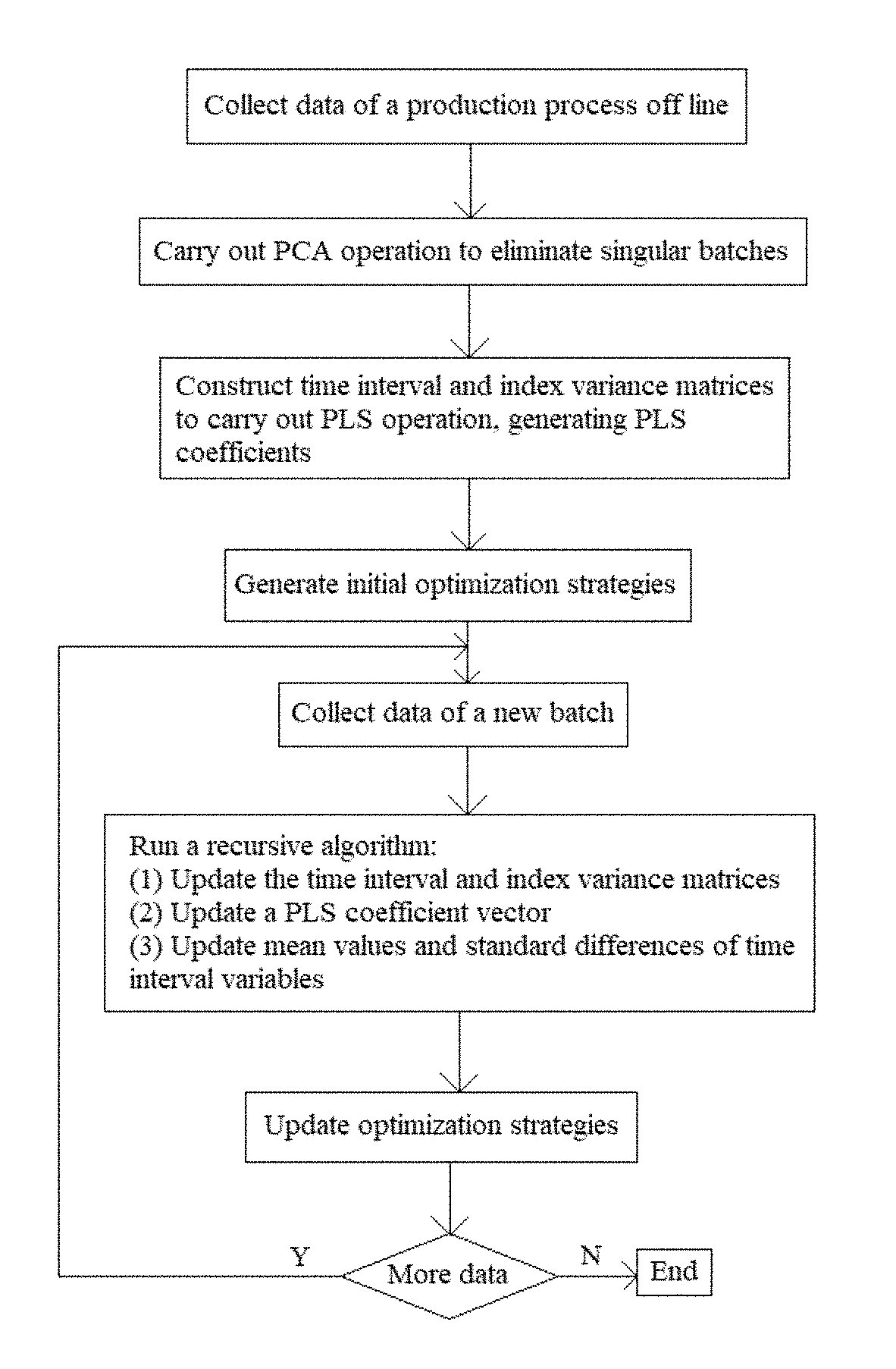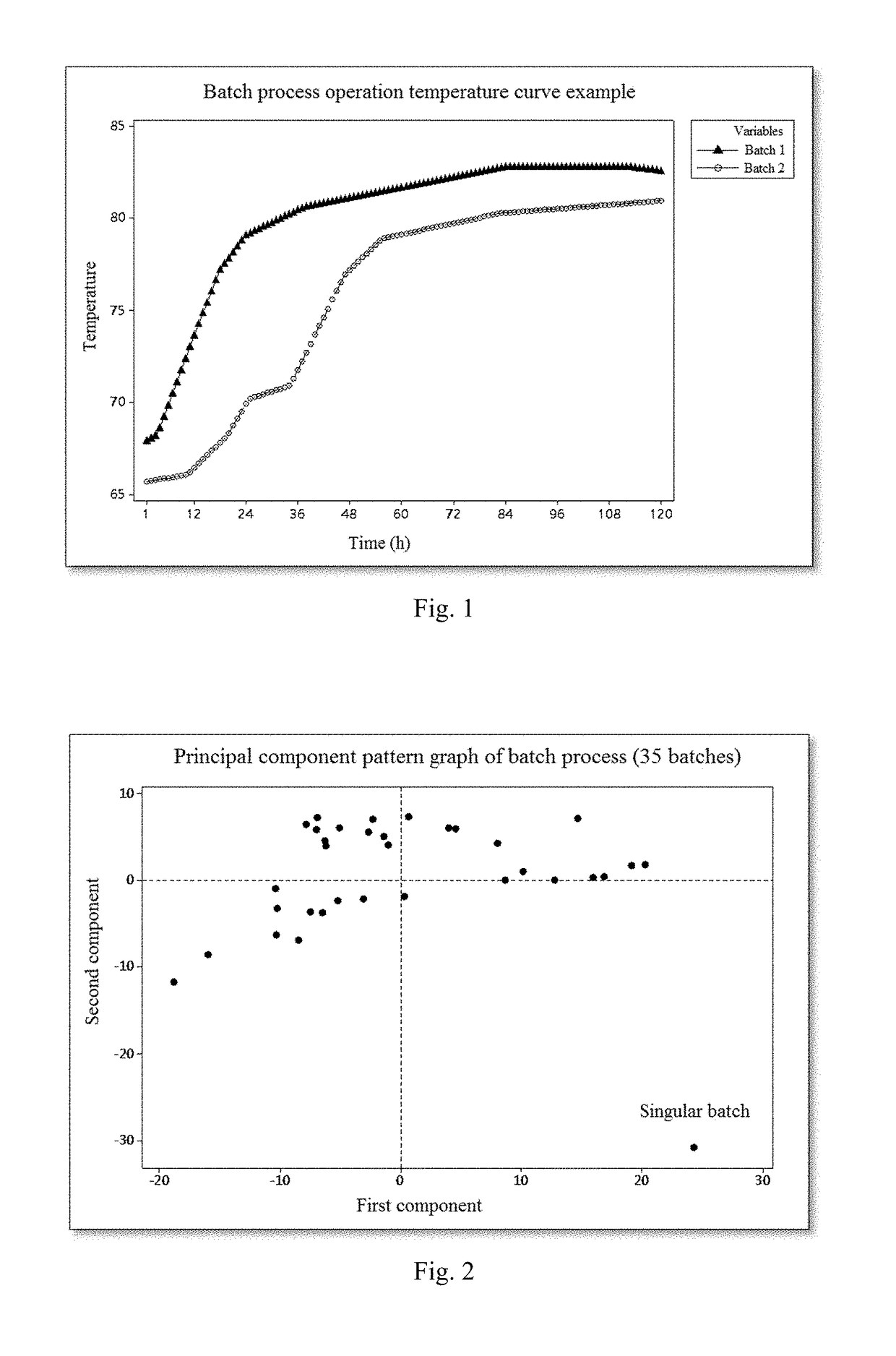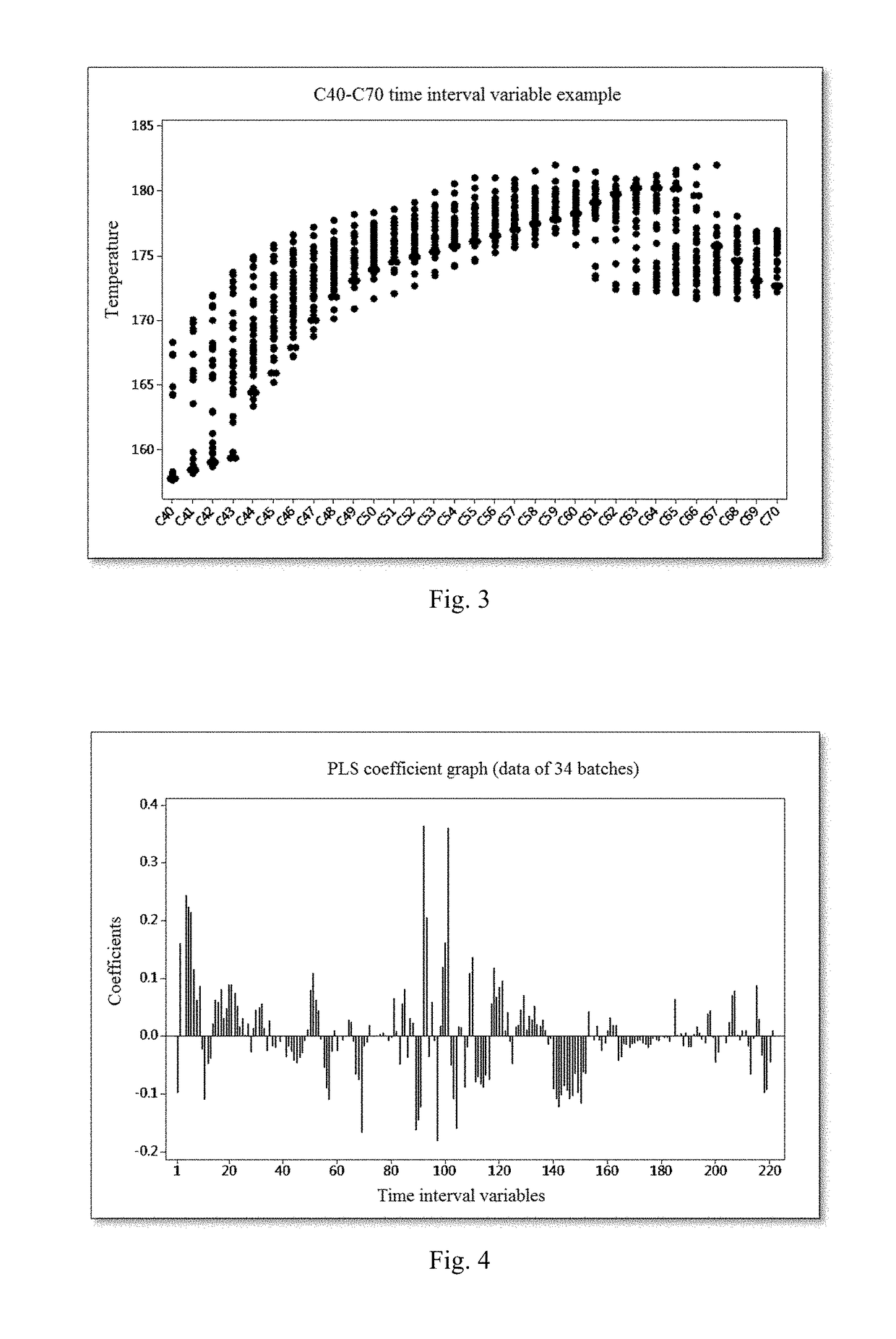Data-Difference-Driven Self-Learning Dynamic Optimization Method For Batch Process
a batch process and data-difference-driven technology, applied in machine learning, program control, instruments, etc., can solve the problems of difficult to solve, limited optimization performance, and lack of conditions for a lot of experiments in batch processes, etc., to achieve easy tracking and control
- Summary
- Abstract
- Description
- Claims
- Application Information
AI Technical Summary
Benefits of technology
Problems solved by technology
Method used
Image
Examples
Embodiment Construction
[0041]The present embodiment takes a batch crystallization process as an example, and the method does not limit the scope of the present invention.
[0042]The method is divided into three parts. The first part is collection and preprocessing of data. The second part is calculation of initial optimization strategy. The third part is calculation of recursive optimization strategies on basis of obtaining updated batch data.
[0043]The block diagram of the implementation steps of the method is shown in FIG. 6, and the specific implementation steps and algorithms are as follows:
[0044]Step 1: For the batch crystallization process complete in operation, choose a temperature operation curve closely relates to product yield as a to-be-optimized variable, and collect 35 sets of temperature variables and final yield index data according to batches. The time interval of data collection is 1 minute. FIG. 1 is a temperature curve example (partial) of a batch crystallization process.
[0045]Step 2: For ...
PUM
 Login to View More
Login to View More Abstract
Description
Claims
Application Information
 Login to View More
Login to View More - R&D
- Intellectual Property
- Life Sciences
- Materials
- Tech Scout
- Unparalleled Data Quality
- Higher Quality Content
- 60% Fewer Hallucinations
Browse by: Latest US Patents, China's latest patents, Technical Efficacy Thesaurus, Application Domain, Technology Topic, Popular Technical Reports.
© 2025 PatSnap. All rights reserved.Legal|Privacy policy|Modern Slavery Act Transparency Statement|Sitemap|About US| Contact US: help@patsnap.com



